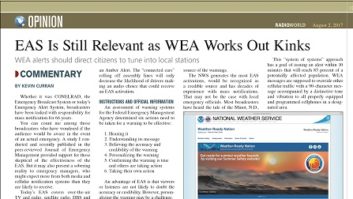(click thumbnail)Credit: Courtesy National Center for Missing and Exploited ChildrenOver the past 10 years, AMBER Alerts have become a highly recognized force in the recovery of missing children in America. Named after Amber Hagerman of Arlington, Texas, who was abducted and murdered in January, 1996, the alerts have now been implemented in more than 115 communities.
The program has created national awareness, but its success depends entirely upon local implementation.
To understand the effectiveness of AMBER Alerts, it is worthwhile to review some of its history. Nine-year old Amber was abducted from her suburban Arlington neighborhood while riding her bike. The kidnapping was witnessed by a man who saw Amber being yanked from her bike and thrown into the front seat of a truck.
The witness informed the police that the vehicle was a dark-colored, short-bed pickup truck. While not much of a description, if this information had been broadcast to the public it could have activated eyeballs on the road during the critical search period, perhaps leading to a happier outcome.
Statistics have shown that, when it comes to returning a child home safely, the first two hours following an abduction are the most integral. The longer it takes to recover a child, the more likely it is that the child will be harmed.
It is chilling to think in these terms, but necessary in order to protect our children.
Voice of the people
I moved to Dallas shortly after Amber Hagerman was murdered. It was apparent that the community of Arlington and the surrounding areas were experiencing a crisis within their community. The tragedy shook the emotions of everyone, and immediately following it, radio stations received phone calls and letters suggesting the broadcast community consider taking action to improve information sharing within the community in instances of abduction.
In April of 1996, a task force of members of the ARMS Radio Broadcast Association in Dallas began working on the alert program. This local radio association put aside competitive differences to address the needs of the community — a hallmark of radio broadcasters across the country, whom I have seen assist in crises that are sometimes the result of natural disasters, sometimes man-made.
The radio task force began working with Dee Anderson from the Arlington Police Department to create a plan that would provide access to the local radio stations airwaves in the event of an abduction. Providing this access, though, initially raised some red flags on the part of broadcasters and both sides of local law enforcement.
Law enforcement needed to do its job without interference, and broadcasters wanted to do their job without compromising the alert system. Lengthy meetings were held to create the template for the plan through the balance of the year, and multiple tests were conducted by Dallas-Fort Worth broadcasters.
The primary EAS stations in the markets, WBAP and KRLD, agreed to air the messages immediately and communicate the announcement with all radio stations in the area. It was the responsibility of the other market stations to air the alerts as soon as possible.
The criteria and guidelines were developed between the police and broadcasters within the market. It was a long process but one that allowed law enforcement and broadcasters to air their concerns and create a foundation that was easy to replicate.
Soon other markets became interested in creating their own system, and AMBER Alert systems became fully functional by June of 1997.
Radio works
The original guidelines listed below for activating an AMBER Alert in Dallas-Fort Worth are the foundation for the “guidance” currently in use by the U.S. Department of Justice.

- Law enforcement must confirm that an abduction has taken place.
- The child must be at risk of serious injury or death.
- There must be sufficient descriptive information of the child, captor or captor’s vehicle to issue an alert.
- The child must be 17 years old or younger.
The effectiveness of radio with the alert program was demonstrated in Dallas on a cold night in the middle of winter when a woman parked her car in a no-parking fire lane and hurried into a laundromat, leaving her five-month old daughter in the back seat asleep. Returning, she found her car and baby were gone.
She called 911 and an Amber Alert was issued giving a detailed description of the vehicle, the child and the area of disappearance. Shortly after, a driver for a North Texas towing company heard the alert and recalled bringing in a car matching the alert description. Discovering the automobile in an impound lot, they found the five-month-old still asleep in the back seat.
Had the radio alert not been aired, it could have been days until law enforcement found the car. This alert prevented a tragedy as have other AMBER Alert programs nationwide, which have helped save the lives of 192 children.
The AMBER Alert program has spread far beyond radio. Outdoor advertising, for instance, deploys digital billboards to post AMBER Alerts along highly-traveled routes across the country. Educational programs have been developed to teach law enforcement agencies and broadcasters how to create and implement programs in their community.
I have read where the Department of Justice estimates there are up to 4,600 stranger abductions per year, about 12 per day. It is clear that serving the public interest with the AMBER Alert is a good idea for radio. It is a program with national awareness but it is entirely dependent upon local implementation.











